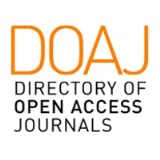Possibilities of Block Play for the learning of Mathematics in Early Childhood Education
DOI:
https://doi.org/10.58265/pulso.5012Keywords:
Block Play, Early Childhood Education, Mathematics, Geometry, Measurement, Topology, Equivalence, Symmetry, PatternsAbstract
We present a mathematical, developmental, and educational guide to study block play in Early Childhood Education and to reflect on the possibilities that block play offers for the learning of mathematics. To this end, we describe a building material that promotes mathematical activity; we explain what kind of construction is performed by children from 2 to 6 years, and what development can be observed in block play in this age group. Then, we offer educational orientations to implement block play and to promote the learning of mathematics. We conclude by reflecting on sufficient conditions for block play to «ensure» that mathematical learning really takes place.
Downloads
References
Alsina, A. (2011): Educación matemática en contexto: de 3 a 6 años. Barcelona: ICE Universidad de Barcelona & Horsori.
Arnáiz, V. (2005): Cambio en las inteligencias. Aula de infantil, 28, 5-6.
Casey, M. B., Andrews, N., Schindler, H., Kersh, J. E., Samper, A., & Copley, J. (2008): «The development of spatial skills through interventions involving block building activities». Cognition and Instruction, 26, 269-309.
Chalufour, I., y Worth, K. (2004): Building structures with young children. St. Paul, MN, Redleaf Press.
De Castro, C., y Escorial, B. (2005): «Aprendiendo matemáticas a través de proyectos: Una experiencia inspirada en el enfoque de Reggio Emilia». En E. Rodrigues (Coord.), Actas do I Congresso Internacional de Aprendizagem na Educação de Infância – CIANEI (pp. 139-150): Porto, Gailivro. Recuperado el 30 de junio de 2011, de http://eprints.ucm.es/12642/
De Castro, C., y Escorial, B. (2006): «El juego de construcción: una experiencia matemática para la escuela infantil». Indivisa Revista, 15, 15-17. Recuperado el 30 de junio de 2011 de http://eprints.ucm.es/12635/
Ginsburg, H. P. (2006): «Mathematical play and playful mathematics: A guide for early education». In D. Singer, R. M. Golinkoff & K. Hirsh-Pasek (Eds.), Play = learning: How play motivates and enhances children»s cognitive and social-emotional growth (pp. 145-165): New York, Oxford University Press.
Goldschmied, E., y Jackson, S. (2000): La educación infantil de 0 a 3 años. Madrid, Morata.
Gura, P. (Ed.) (1992): Exploring learning: Young children and blockplay. London, Paul Chapman Publishing.
Johnson, H. (1996): «The art of block building». In E. S. Hirsch (Ed.), The block book (3rd ed.) (pp. 9–25): Washington, DC, NAEYC.
Kersh, J., Casey, B. M., & Young, J. M. (2008): «Research on spatial skills and block building in girls and boys». In B. Spodek y O. N. Saracho (Eds.), Contemporary perspectives on mathematics in Early Childhood Education (pp. 233-251): Charlotte, NC, Information Age Publishing.
Leeb-Lundberg, K. (1996): «The block builder mathematician». In E. S. Hirsch (Ed.), The block book (3rd ed.) (pp. 34–60). Washington, DC, NAEYC.
National Council of Teachers of Mathematics (2003): Principios y Estándares para la Educación Matemática. Sevilla: SAEM Thales.
Trueba, B. (2000): Talleres integrales en la educación infantil: Una propuesta de organización del escenario escolar (2ª ed.). Madrid, Ediciones de la Torre.
Vereecken, P. (1961): Spatial development: Constructive praxia from birth to the age of seven. Groningen, Wolters.
Wellhousen, K., y Kieff, J. (2001): A constructivist approach to blockplay in early childhood. Albany, NY, Delmar.
Downloads
Published
How to Cite
Issue
Section
License
Copyright (c) 2022 Pulso. Revista de educación

This work is licensed under a Creative Commons Attribution-NonCommercial-NoDerivatives 3.0 Unported License.
This journal offers immediate open access to its content based on the idea that offering readers free access to research favours a global exchange of knowledge.
Papers are published in the electronic version of the journal under a Creative Commons License: Attribution-NonCommercial-No derivatives 4.0 International
Authors are allowed and encouraged to promote the post-print version (reviewed and accepted for publication version) of their work online before publishing them. This favours their earlier circulation and dissemination and thus a possible increase in their citation and reach among the academic community.













